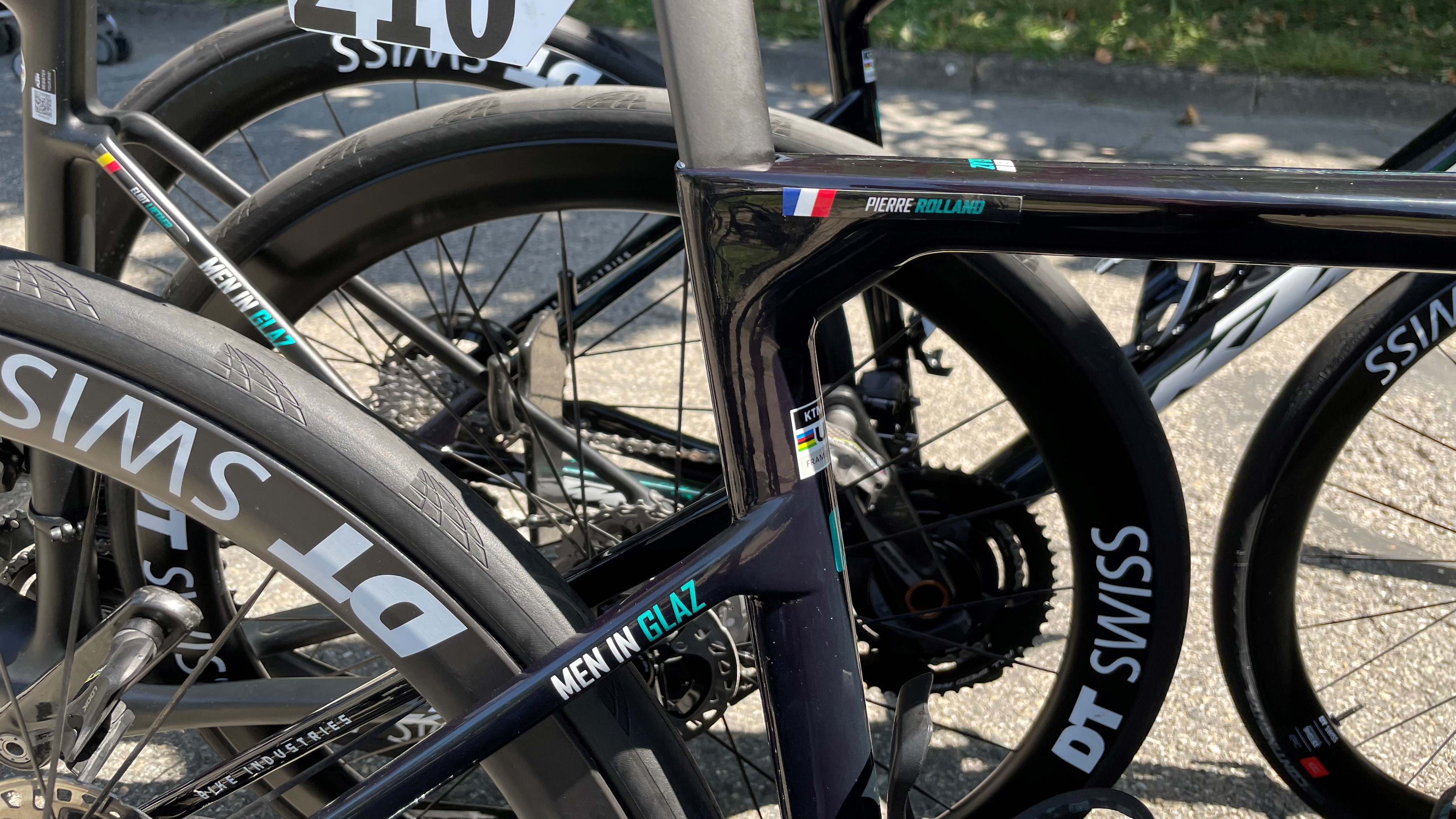New KTM frameset spotted at Dauphine
Entirely new frame shape, full integration, and a modest fork update too

The Critérium du Dauphiné is always a good place to spot some new tech ahead of the Tour. We've already seen the radical new Trek Madone (hard to miss, let's be honest), and a more subtle update to the Canyon Ultimate.
Not to be outdone by the World Tour teams, BnB Hotels p/b KTM has been spotted riding a seriously overhauled new Revelator Alto frameset from the Austrian Brand. Previously the Alto, the brand's only road bike, appeared to be more in the mould of what we'd consider a 'climbing bike'. Svelte, waspish, but few concessions to aerodynamics. Now, however, the new frameset appears to have morphed into a more all round package to keep up with modern trends. Interestingly though, the frameset isn't currently on the approved list.
You can still see the design cues of the old frameset, but now the bike sports a near horizontal top tube, integrated cabling, a one piece bar and stem, new seatstays, and an integrated seat clamp.
Updated aero frame details
The toptube, previously heavily sloped in a way reminiscent of the Giant TCR, is now near horizontal and transitions smoothly into the integrated one piece bar-stem combo. The cables and hoses are all hidden internally, so no more entry port in the top of the NDS fork leg for the front brake. The transitions between the main tubes have also been boxed out with triangular sections too.


Re-engineered seattube
At the rear the seattube no longer protrudes above the toptube, but sits totally flush with it and utilises an integrated seat clamp, though it's currently unclear where the adjustment port is located; it doesn't seem to be on either the front or rear of the seattube, or the drive side, so by deduction we suspect it's on the NDS. For critics of proprietary tech there is mercifully a Ritchey seatpost, rather than a KTM specific unit, which has a sculpted upper to presumably aid vibration damping.



New seatstay design
Sticking at the seattube junction, gone are the old style seatstays with the kink at the uppers to allow them to join horizontally. Now they are perfectly straight, save for a subtle fanning out of stays at the join. The seattube too seems to be more heavily formed, elongated along the long axis of the bike around the front derailleur area before becoming more spherical at the upper.


Modest fork update
The forks, besides the total internal routing, seem to be much the same as the old model save for a rounder area around the thru-axle.
The latest race content, interviews, features, reviews and expert buying guides, direct to your inbox!

The previous model for reference


Will joined the Cyclingnews team as a reviews writer in 2022, having previously written for Cyclist, BikeRadar and Advntr. He’s tried his hand at most cycling disciplines, from the standard mix of road, gravel, and mountain bike, to the more unusual like bike polo and tracklocross. He’s made his own bike frames, covered tech news from the biggest races on the planet, and published countless premium galleries thanks to his excellent photographic eye. Also, given he doesn’t ever ride indoors he’s become a real expert on foul-weather riding gear. His collection of bikes is a real smorgasbord, with everything from vintage-style steel tourers through to superlight flat bar hill climb machines.